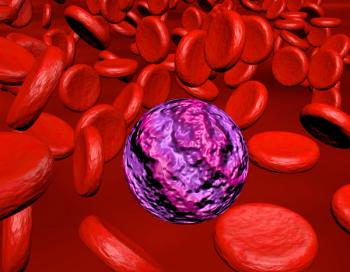
- Oncology Vol 29 No 4_Suppl_1
- Volume 29
- Issue 4_Suppl_1
(P090) Pediatric Metastatic Odontogenic Ghost Cell Carcinoma: A Multimodal Treatment Approach
OGCC can exhibit aggressive progression, warranting investigation into multimodal therapy. Given that adjuvant chemoradiation and immunotherapy are associated with improved outcomes in primary head and neck cancer, a similar application in OGCC may help guide optimal treatment. This approach was well tolerated in our pediatric patient, and he remains disease-free at 14 months.
Safia K. Ahmed, Masayo Watanabe, MD, Daphne E. deMello, MD, Thomas B. Daniels; Department of Radiation Oncology, Mayo Clinic; Phoenix Children’s Hospital for Cancer and Blood Disorders; Department of Pathology and Laboratory Medicine, Phoenix Children’s Hospital
INTRODUCTION: Odontogenic ghost cell carcinoma (OGCC) is an extremely rare tumor, wherein the optimal management remains uncertain. We report the first pediatric metastatic OGCC case treated with multimodal therapy: surgery, adjuvant chemoradiation, and adjuvant immunotherapy.
CASE DESCRIPTION: A 10-year-old Hispanic male presented with facial swelling. A right maxillary mass was appreciated on exam. Imaging demonstrated a 3.3-cm soft tissue mass in the right maxilla with destruction of adjacent bone and displacement of molars. Pathology confirmed OGCC. Presurgical imaging obtained 5 weeks later noted growth of the mass to 6.7 cm, with right submandibular and posterior cervical adenopathy. Surgery entailed right-sided modified radical maxillectomy, palatectomy, and neck dissection. Multiple re-excisions were performed to obtain negative margins. Seven level 1 and 2 lymph nodes were positive for tumor. Immunohistochemistry was positive for epidermal growth factor receptor (EGFR), indicating cellular expression of EGFR protein. Adjuvant chemoradiation was recommended, the given rapid presurgery growth, adenopathy, and concern for microscopic residual disease. A dose of 44 Gy in 22 fractions was administered to the postoperative bed and bilateral neck via intensity-modulated radiation therapy (IMRT) prior to treatment break for toxicity. Reimaging then demonstrated new 1.7-cm left gingivolabial disease. Radiation plans were redesigned, with the postoperative bed treated to total doses of 60 Gy/30 fractions and the left gingivolabial disease treated to 39 Gy/13 fractions. Treatment-related toxicity included dehydration, dermatitis, and malnutrition. Monthly cetuximab was initiated, and the patient remains disease-free at 14 months.
DISCUSSION: Adjuvant treatment was recommended, given the metastatic disease, rapid growth, and concern for microscopic residual disease. As adjuvant chemoradiation and immunotherapy are associated with improved outcomes in primary head and neck cancer, a similar approach was adopted. Multimodal therapy is thought to be unsuitable in OGCC due to the poor outcomes documented in seven patients treated with radiation and/or chemotherapy in the current literature. These conclusions are difficult to draw, given the small number of cases. Moreover, these modalities were utilized over 15 years ago. As significant advances have been made with multimodal therapy since then, further investigation is warranted, especially since this approach was tolerated in our patient and since he remains disease-free.
CONCLUSION: OGCC can exhibit aggressive progression, warranting investigation into multimodal therapy. Given that adjuvant chemoradiation and immunotherapy are associated with improved outcomes in primary head and neck cancer, a similar application in OGCC may help guide optimal treatment. This approach was well tolerated in our pediatric patient, and he remains disease-free at 14 months.
Proceedings of the 97th Annual Meeting of the American Radium Society-
Articles in this issue
Newsletter
Stay up to date on recent advances in the multidisciplinary approach to cancer.


















































































